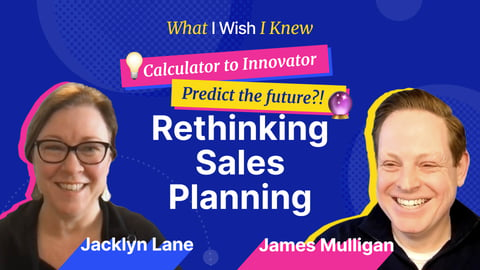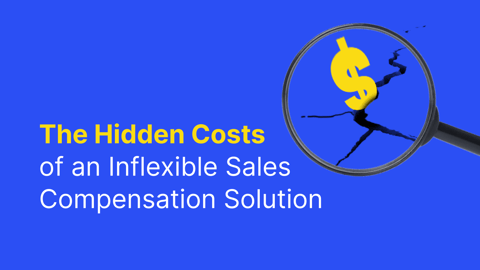25% of companies that have implemented a new technology were unable to measure ROI. Why is that and what can a company do to realize a better return on their sales performance management (SPM) software investment? I’ve invited Rob Blohm, CRO at Open Symmetry, to share his experiences on the latest episode of What I Wish I Knew. Here are the three takeaways from our discussion. For more insights, watch the full episode (and don’t forget to subscribe).
1. Don’t lose sight of the business case.
The business case should answer the issues that you’re aiming to solve with the SPM solution. Will it introduce a lower error rate? How does it support talent retention goals and other strategic initiatives? It’s essential to refer to the business case through all the steps of implementation – from discovery and approval to design and going live.
Here’s another important point about the business case. Securing a budget is a common barrier to introducing a new SPM solution. A robust, thorough business case will go a long way to helping secure what you need to introduce change. The more you quantify value, the better.
2. The right solution eliminates friction.
One common question that comes up when implementing a new solution: If a new SPM solution improves process efficiency and payment accuracy, does it affect the compensation administration headcount? It really depends, but in most cases it doesn’t. When implementation is done correctly, you will have more effective resources on your team. Instead of spending their hours crunching numbers from a spreadsheet, your team can focus on being more strategic, less tactical.
3. Keep it simple.
ROI is tied, in part, to the cost and amount of time spent on implementation. An SPM solution is directly impacting sales targets, revenue growth, and company strategic objectives. That means it’s going to get a lot of attention. This is a resource-heavy process – with cross-functional stakeholders, from HR to IT, Sales, OP, Finance, and so on. Emotions can run high. After all, it’s people’s livelihoods we are dealing with.
That’s why it’s best to keep the implementation as simple as you can. You may not be able to accomplish everything in the first pass. A general rule of thumb is to get 80% of the work done in your first phase, at 20% of the total cost. The thinking is, you get quicker wins, and get live faster. Once your team is more experienced in the solution, fold in more groups and more complex applications of the solution. That’s when you attack the more complex issues, like the squirrely incentive plans, data that’s not clean, and complex reporting requirements.
With AI, predictive analytics, dashboards, and so on, SPM solutions have become more complex in terms of functionality. Often, companies will want the dashboards and predictive analytics from the get-go. While tempting, it’s best to not try and introduce all the features at once, or you may not realize the full value the solution can provide. It takes time to build the skill sets required to get optimal results. In a practical sense, it’s wise to introduce these features in phase two when you have data in the system and some basic reports created. Your dashboards will be that much smarter. And that’s why implementation can be a longer process – there’s a lot of value to untap from an SPM solution.
Self-sufficiency is key to helping organizations realize value from the SPM solution. How so? You’ll have to watch the full episode to find out.
Previous What I Wish I Knew episodes have covered AI and predictive analytics, the nuances of ACV, and incentive compensation plan assessment best practices. We’d love to hear from you. Let us know what you want to know more about in the comment section of the latest episode.



